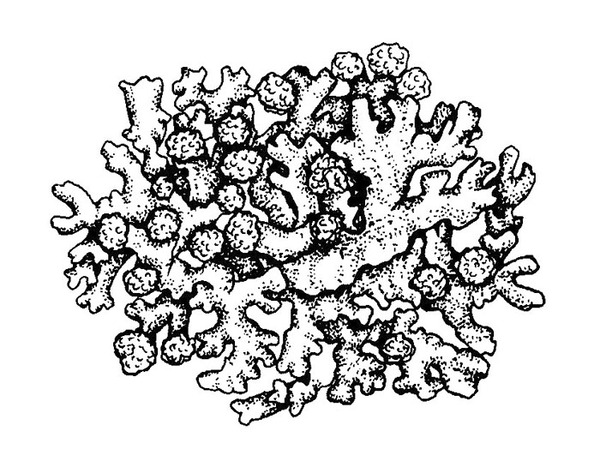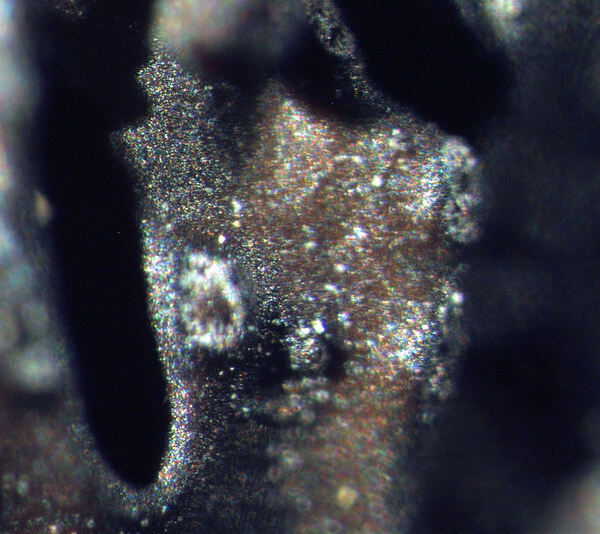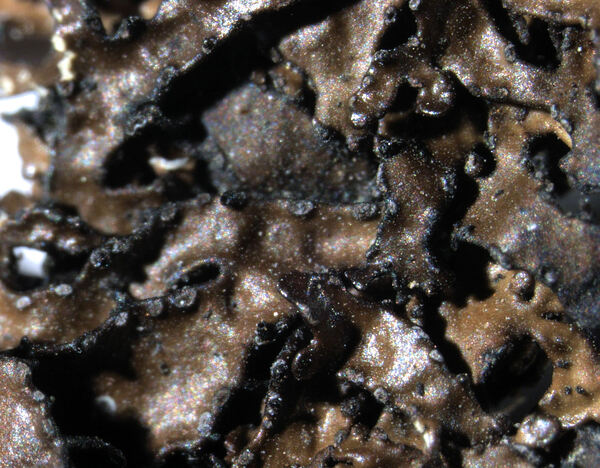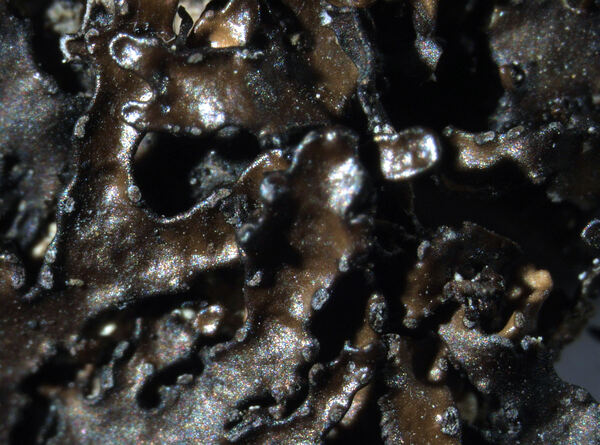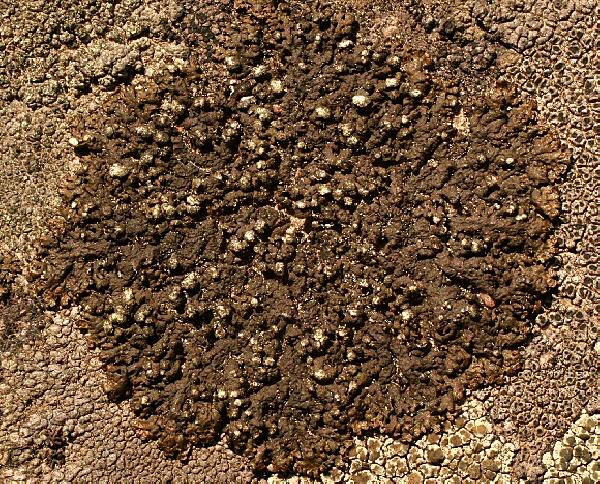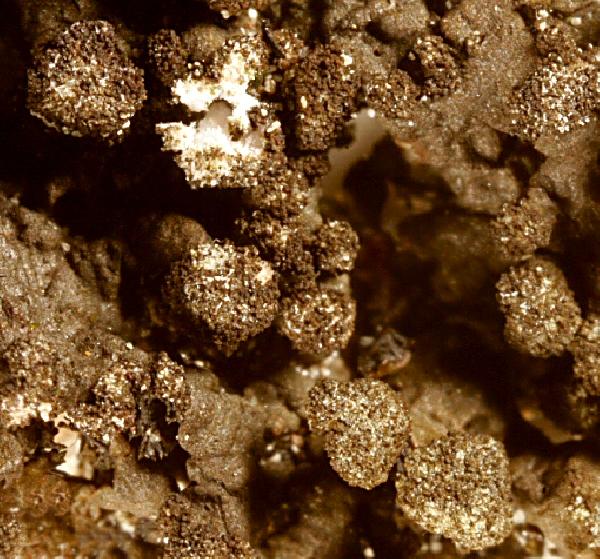Montanelia sorediata (Ach.) Divakar, A. Crespo, Wedin & Essl.
Am. J. Bot., 99: 2023, 2012. Basionym: Parmelia stygia var. sorediata Ach. - Lichenogr. Univ.: 471, 1810.
Synonyms: Imbricaria sorediata (Ach.) Arnold; Imbricaria sprengelii (Flörke) Körb.; Melanelia sorediata (Ach.) Goward & Ahti; Melanelia sorediosa (Almb.) Essl.; Parmelia sorediata (Ach.) Th. Fr.; Parmelia sorediifera R. Sant.; Parmelia sorediosa Almb.; Parmelia sprengelii Flörke
Description: Thallus foliose, heteromerous, dorsiventral, closely adnate, up to 6 cm in diam., sorediate. Lobes separate, linear, 0.5-1.5 mm wide, flat, the terminal parts not markedly expanded. Upper surface dark olive-brown to blackish, paler olive-brown in shade-forms, dull, smooth to reticulate near the periphery, without pseudocyphellae, with discrete, capitate soralia at the tips of lateral lobes, the soredia whitish. Lower surface dark brown to black, with scattered, dark, simple rhizines. Upper cortex paraplectenchymatous, with a non-pored epicortex, the cell walls containing isolichenan; medulla white; lower cortex paraplectenchymatous. Apothecia rare, up to 2.5 mm across, lecanorine, sessile or short-stipitate, with a concave to flat disc and a usually sorediate thalline margin. Epithecium brown; hymenium and hypothecium colourless. Asci 8-spored, clavate, Lecanora-type. Ascospores 1-celled, hyaline, ellipsoid, 9-11 x 4.5-6 µm. Photobiont chlorococcoid. Spot tests: upper cortex K-, C-, KC-, P-, N-; medulla K-, C-, KC- or rarely KC+ very faint pink, P-, UV+ white. Chemistry: medulla with perlatolic and stenosporic acids (both major).
Growth form: Foliose, broad lobed
Substrata: rocks
Photobiont: green algae other than Trentepohlia
Reproductive strategy: mainly asexual, by soredia, or soredia-like structures (e.g. blastidia)
Commonnes-rarity: (info)
Alpine belt: absent
Subalpine belt: very rare
Montane belt: very rare
Dry submediterranean belt: absent
Humid submediterranean belt: absent
Padanian area: absent
pH of the substrata:
1 2 3 4 5
Solar irradiation:
1 2 3 4 5
Aridity:
1 2 3 4 5
Eutrophication:
1 2 3 4 5
Poleotolerance:
0 1 2 3
Altitudinal distribution:
1 2 3 4 5 6
Rarity
absent
extremely rare
very rare
rare
rather rare
rather common
common
very common
extremely common
Loading data...
Occurrence data
Predictive map
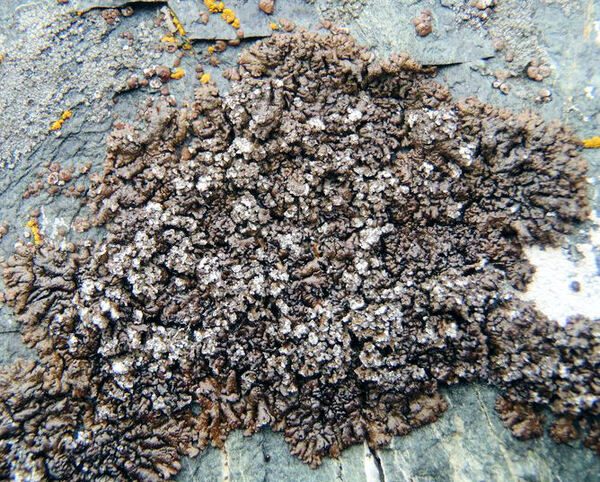
Curtis Randall Björk CC BY-SA 4.0
Northwest Territories, near MacKay Lake Date: 2011-08-08 On rock outcrop in brushy tundra
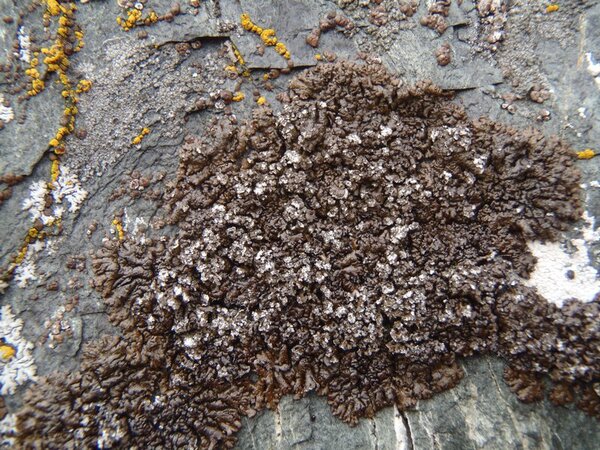
Curtis Randall Björk – CC BY-SA 4.0
Northwest Territories, near MacKay Lake Date: 2011-08-08 On rock outcrop in brushy tundra
Growth form: Foliose, broad lobed
Substrata: rocks
Photobiont: green algae other than Trentepohlia
Reproductive strategy: mainly asexual, by soredia, or soredia-like structures (e.g. blastidia)
Commonnes-rarity: (info)
Alpine belt: absent
Subalpine belt: very rare
Montane belt: very rare
Dry submediterranean belt: absent
Humid submediterranean belt: absent
Padanian area: absent
pH of the substrata:
| 1 | 2 | 3 | 4 | 5 |
Solar irradiation:
| 1 | 2 | 3 | 4 | 5 |
Aridity:
| 1 | 2 | 3 | 4 | 5 |
Eutrophication:
| 1 | 2 | 3 | 4 | 5 |
Poleotolerance:
| 0 | 1 | 2 | 3 |
Altitudinal distribution:
| 1 | 2 | 3 | 4 | 5 | 6 |
Rarity
absent
extremely rare
very rare
rare
rather rare
rather common
common
very common
extremely common
Loading data...
Occurrence data
Predictive map

Curtis Randall Björk CC BY-SA 4.0
Northwest Territories, near MacKay Lake Date: 2011-08-08 On rock outcrop in brushy tundra



